Description
Guidelines for PolyGlycoplex A innovation tools
PolyGlycoplex A innovation tools include PolyGlycoplex A Bulk materials,PolyGlycoplex A Solid Phase Extraction Cartridges and PolyGlycoplex A Javelin Guard Cartridges.
Structure of Product Description:
Cartridges or Material Description- Particle diameter(um)- Quantity x ID(mm)/Art No.
PolyGLYCOPLEX A innovation tools are used for HILIC of Complex Carbohydrates
PolyGLYCOPLEX A – for HILIC of Complex Carbohydrates is a neutral material. What is more, it has the unusually high capacity needed to retain complex carbohydrates in the HILIC mode.
PolyGLYCOPLEX A can frequently be operated with just acetonitrile and water. However, charged carbohydrates may require the inclusion of some salt such as ammonium acetate.
These conditions are convenient for the isolation of carbohydrates or direct flow to a mass spectrometer. Selectivity is good for both native glycans and derivatives such as those with the 2-aminopyridine (PA-) fluorophore
Oligosaccharide mixtures can often be resolved isocratically. However, sometimes gradients are recommended for especially varied samples. Sialylated and asialo- glycans can be resolved using the same running conditions. In some cases, selectivity compares favorably with that of HPAEC with PAD detection. That is to say, both running conditions and equipment maintenance are far more convenient.
Working with PolyGLYCOPLEX A – for HILIC of Complex Carbohydrates
Initial Use:
PolyGLYCOPLEX A is a silica-based material that operates through hydrophilic interaction chromatography (HILIC).
Retention is influenced by the solvent used: ACN~PrOH>EtOH>MeOH.
Columns are shipped in methanol.
Prepare the column for use in the following manner (200 x 4.6mm ID columns): Flush with 15 column volumes of water (30 minutes @ 1 mL/min) Flush with 30 column volumes of conditioning buffer (1 hour @ 1 mL/min) Flush with 15 column volumes of water (30 minutes @ 1 mL/min) Flush with 30 column volumes of mobile phase (1 hour @ 1 mL/min) It’s a good idea to run at least one gradient cycle with a new column before injecting samples. Changes in the topography of the polymeric coating may lead to modest changes in the retention times during the first few runs following exposure to aqueous mobile phases.
New HPLC columns sometimes absorb small quantities of proteins or phosphorylated peptides in a nonspecific manner. The sintered metal frits have been implicated in this. Eluting the column for 20-24 hr. at a low flow rate with 40mM EDTA.2Na usually solves the problem. This passivates all metal surfaces in the HPLC system, as well as the column
[CAUTION: This treatment can affect the integrity of the frits in some cases, and should probably be avoided with columns packed with 3-μm material. In some cases this has also caused the collapse of 5-μm, 200-Å column packings].
If a column is to be used in mass spectroscopy: Columns of all materials suitable for protein applications will leach coating components when new. This can result in an elevated background in mass spec. To accelerate the loss of leachable coating components, substitute 50 mM formic acid for the salt solution to condition a new column. Elute the column for 24 hours at a low flow rate. Then, flush out the formic acid with water and equilibrate with the HILIC mobile phases.
Routine use:
Columns should be used at ambient temperatures. Filter mobile phases and samples before use. Failure to do so may cause the inlet frit to plug.
If a gradient is being used, flush the column with 15 column volumes of the low organic solvent before equilibrating with the high organic solvent. At the end of the day, flush the column with 15 column volumes of water and plug the ends.
Loading Capacity:
The loading capacity of a 4.6mm ID column is about 1 mg of polar solute, depending on the strength of the solute’s binding to the support and the level of organic solvent in the sample solvent. High levels promote binding.
Storage:
1) Overnight: 100% mobile phase A.
2) Several days: Store in water.
3) Longer periods: Store in water in the refrigerator, with the ends plugged. ACN can be added to the storage solvent (e.g., ACN:Water = 80:20) to retard microbial growth.

